

Jumping spiders comprise the largest of the spider families with over 5000 species worldwide. They are all relatively small (usually less than 10mm) and many of them, particularly the tropical species, are very colourful and beautifully marked. The combination of their large eyes, colouration and their generally inquisitive nature make the Salticidae the most endearing of all the spiders.
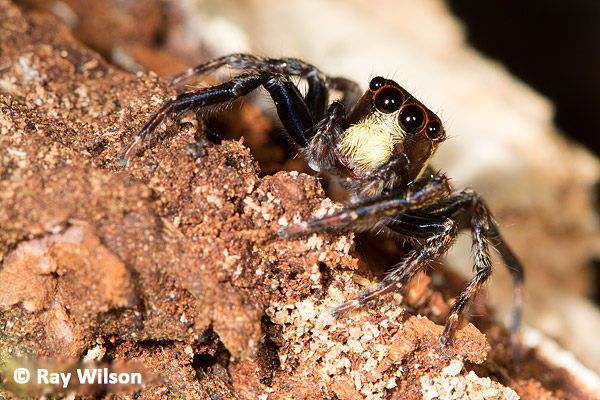
Jumping spiders have distinctive faces with four large, forward-facing eyes, the middle pair being particularly large. They have good visual acuity and they are able to follow a moving object that is several inches away from them. They also have good colour vision with their retinas containing 4 different types of light receptors that extend their vision well into the ultraviolet.
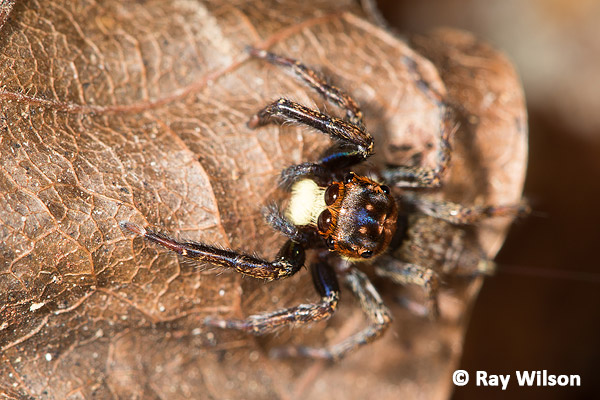
Their ability to jump up to 80 times their own body length is not due to having particularly large or strong muscles, but is instead derived from an internal hydraulic system that, through rapid changes in the pressure of circulating fluids in their legs enables them to generate enough force to propel them several centimetres in a single jump.
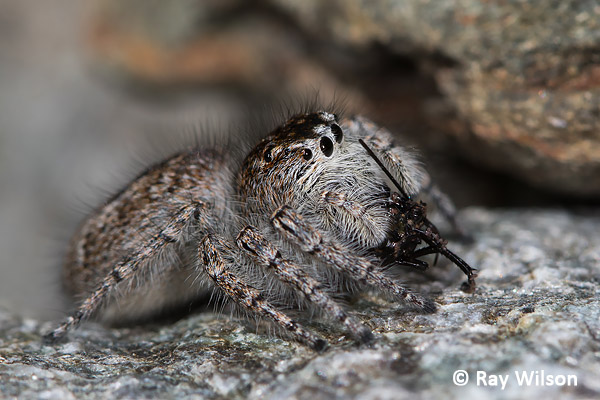
In contrast to most spiders, which usually run away and hide when disturbed, Jumping Spiders exhibit an unusual level of curiosity and will often track the movement of an object by turning its body to keep its large eyes pointing at it. Quite a useful behavioural trait to be aware of when attempting to get photos!
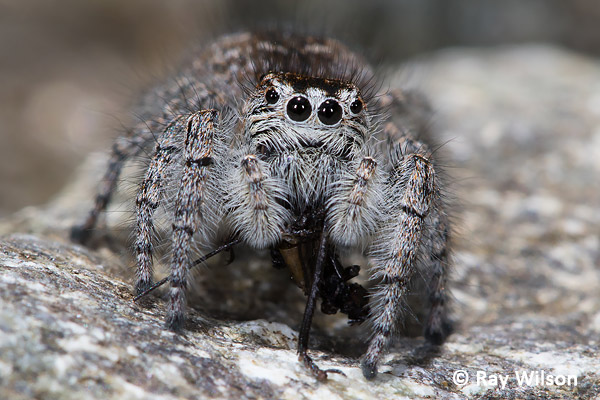
The Salticidae have the distinction of having the only known vegetarian spider in the world. The Mexican Bagheera kiplingi has been discovered to exist on a diet of the beltian bodies of accacia plants that it stealthily steals from under the noses of the plant's resident ants.
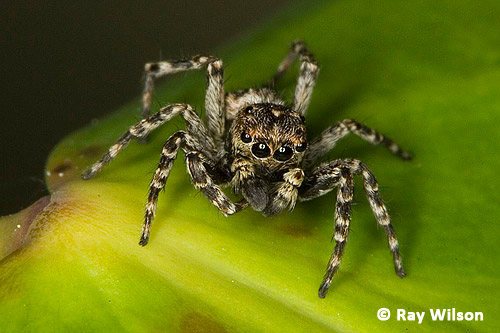
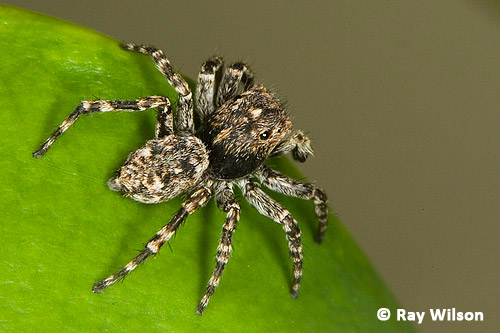
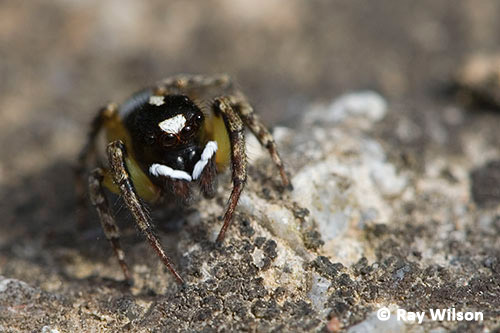
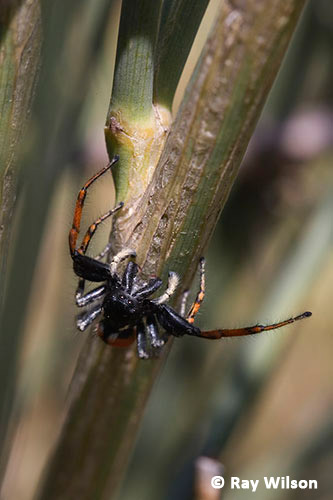
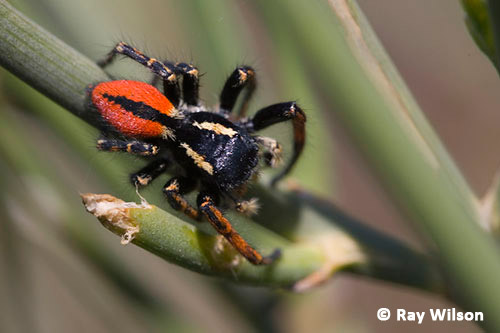
Many Jumping Spiders exhibit a high degree of sexual dimorphism. Some quite extreme examples in the tropics were originally described as two separate species until they were observed mating. A good European example of sexual dimorphism is found in Philaeus chrysops. The male (above) is beautifully coloured with bright scarlet marking, while the female (below) is a more subdued brown colour.
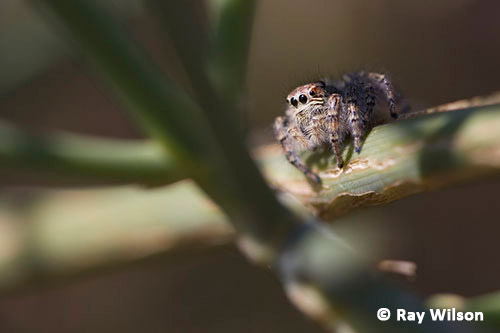
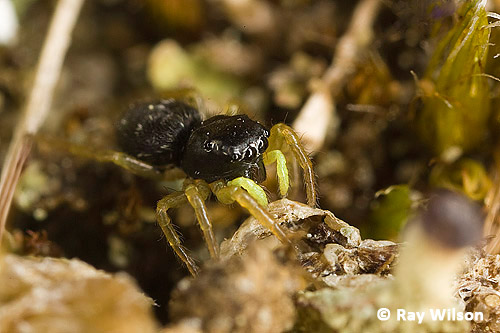
A common British species, Heliophanus flavipes can easily be distinguished from its equally common and widely distributed cogener H. cupreus by the lack of black marking on the front two pairs of legs, and by having black markings restricted to the femora on legs III and IV.
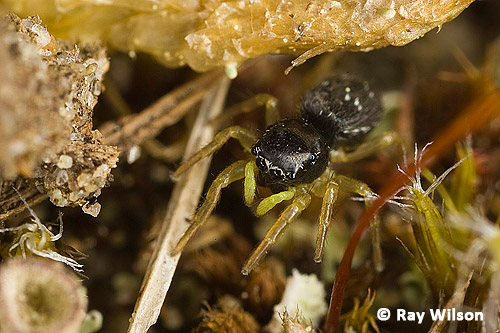
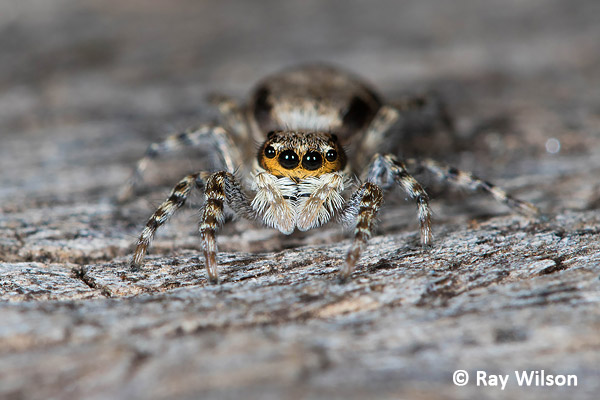
Ray Wilson owns the copyright of all images on this site.
They may not be used or copied in any form without prior written permission.
raywilsonphotography@googlemail.com